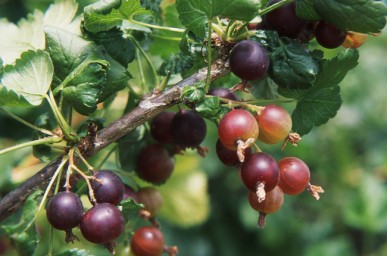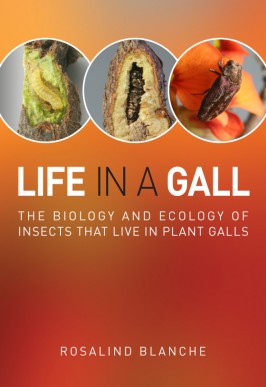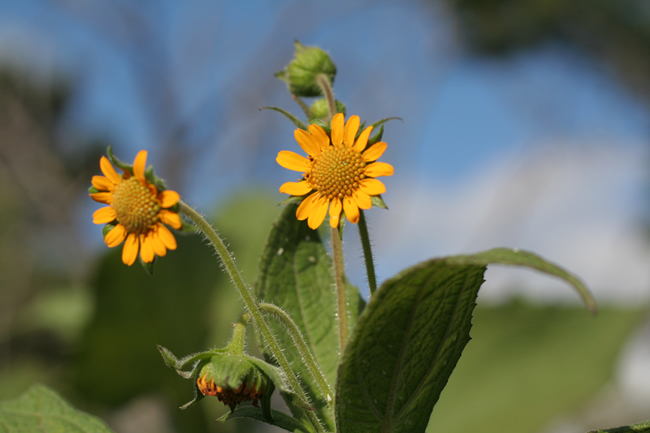Jostaberries (Ribes nidigrolaria) – and pronounced ‘yustaberries’ – are a genetic cross between black currants (Ribes nigrum) and gooseberries (Ribes grossuaria).
This thornless plant which resembles black currant in growth, but with leaves similar, yet larger than the gooseberry was developed by Dr Rudolph Bauer at Max-Planck Institute in Cologne Germany around 1970.
Jostaberries are more vigorous than their parent plants and can be easily propagated from cuttings at the time of pruning or can also be layered, though they do not tend to sucker.
Jostaberries are self fertile, do best in colder areas and will not fruit in warm districts. Leaves are not susceptible to powdery mildew, fungal dieback, currant bud mite and white pine blister. Jostaberries prefer moist well drained soils in full sun, produce small clusters of flowers borne on at least one year-old branches, followed by green berries with underskin veining resembling its gooseberry parent. Read more
Article and photos by Gail Thomas
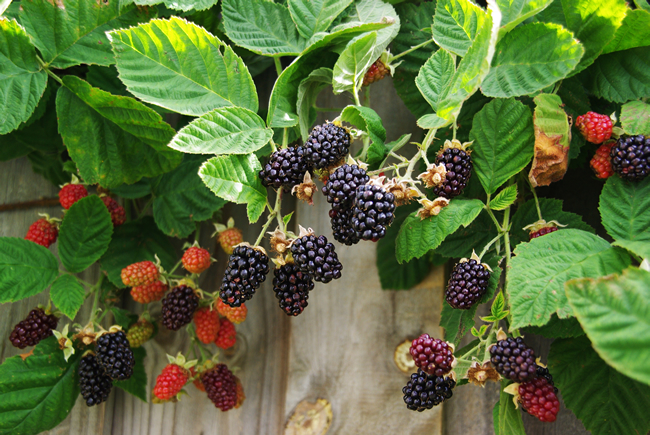 Marionberries are one of the most luscious summer fruits, and although the plants are thorny the resulting delicious fruit far outweighs any prickly encounters! A cross between the Chehalem and Olallieberry blackberries, this vigorous trailing cane blackberry cultivar is named after the county of Marion Oregon where they were developed in the 1950’s. Read more
Marionberries are one of the most luscious summer fruits, and although the plants are thorny the resulting delicious fruit far outweighs any prickly encounters! A cross between the Chehalem and Olallieberry blackberries, this vigorous trailing cane blackberry cultivar is named after the county of Marion Oregon where they were developed in the 1950’s. Read more
Review by Gail Thomas
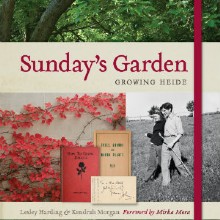 The Heide Museum of Modern Art at Bulleen in Victoria was a neglected former dairy farm when Sunday and John Reed purchased the property in 1934. At the end of their lives and after fifty years of dedication Heide was rich with exotic and native flora and boasted a stunning cottage-style kitchen garden.
The Heide Museum of Modern Art at Bulleen in Victoria was a neglected former dairy farm when Sunday and John Reed purchased the property in 1934. At the end of their lives and after fifty years of dedication Heide was rich with exotic and native flora and boasted a stunning cottage-style kitchen garden.
As art benefactors the Reeds also created a nourishing environment for the artists they championed including Sidney Nolan, Albert Tucker, Joy Hester, Charles Blackman and Mirka Mora some of whose artworks are dotted throughout the book together with historic photos and more recent garden images. Nolan’s poems to Sunday and a dramatis personae of those who contributed to Heide’s rich tapestry and history all add to this fascinating read while a timeline from the 1800’s through to present day documents the couple’s lives, work and garden plantings on the property.
In the 1960’s Sunday’s love of roses is reflected in her rose planting list – Heide’s most famous rose Mutabilis was immortalized in Sidney Nolan’s 1945 painting – Sunday and Susie Bruntion set up Heide Herbs selling herbs propagated in the Heide I kitchen garden and there’s the construction of Heide II, a modernist home on the property which was sold to the Victorian Government in 1980 while the following year Heide Park and Art Gallery is opened.
A comprehensive glossary of trees and plants has been compiled by Heide’s current head gardener Dugold Noyes, in recent times the Heide II kitchen garden and rose walk have been restored and the wild garden is the focus of a major restoration project.
This captivating book will appeal to both art and garden lovers as it explores this intriguing property and its creators.
by Lesley Harding and Kendrah Morgan Miegunyah RRP: $45.00
Review by Gail Thomas
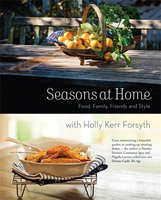 In her latest book house and garden expert Holly Kerr Forsyth has compiled a collection of seasonal recipes to celebrate the bounty of fresh produce from the garden.
In her latest book house and garden expert Holly Kerr Forsyth has compiled a collection of seasonal recipes to celebrate the bounty of fresh produce from the garden.
Each chapter covers a season and along with contemplating a tomato and anchovy tart or rhubarb streusel cake for spring picnic hamper, there are plenty of garden-related hints on bringing flowers indoors, how to keep cut flowers fresh and skillfully arranging them. Summer sees grape and nectarine gratin or making an eye-catching moulded frozen ice bowl dotted with herbs and flowers, a perfect receptacle for serving prawns or an icy fruit sorbet. Getting into the festive spirit there are also details for making decorative flower wreaths, daisy balls and centerpieces for the festive table.
Carrot and ginger soup will bring out the autumn glow while quinces, with pork, baked, in a gooey cake or add to an aromatic autumn fruit pie packed with apples, plums and apricots show off their versatility in a season when it’s also the time to stock up the store cupboard. Preserves, fruit chutney or green tomato and chilli jam and don’t forget to think ahead and plant hyacinths, daffodils, tulips and other bulbs for spring flowering
Winter brings hearty offerings, an array of curries, poached pears with star anise and juniper or stuffed baked apples while you can also turn your hand to making potpourri, studded orange balls or pomanders, there’s even hints on keeping poultry – and the perfectly boiled egg.
Seasons at Home reflects Holly Kerr Forsyth’s unique style, passion for food and practical information on flower arranging, decorating the table to suit an occasion, and growing potted plants to bring indoors.
by Holly Kerr Forsyth, MUP $34.99
The Biology and Ecology of Insects that Live in Plant Galls
This comprehensive handbook, complete with full colour photos will be a useful tool for entomologists, botanists, natural history enthusiasts and native plant nursery managers as well as bushwalkers, forestry students and managers.
Gall-inducing insects can cause problems for agriculture, forestry and horticulture and this book covers the whole gamut from explaining what Australian plant galls are and how they are caused, the little known gall-inducing insects and their host plants to the problems they cause, their enemies and also the benefits associated with gall-inducing insects.
The book explores the ways the insects have adapted to living part of their lives in the confined spaces of galls, and describes the strategies employed by different insect groups to find a suitable site to induce a gall, obtain food, mate and escape the gall. It also looks at the predators, parasitoids, inquilines, kleptoparasites and micro-organisms that prey on gall-inducing insects and the ways the insects defend themselves from these enemies, giving examples of several pest species.
On the positive side, the book describes the essential services gall-inducing insects provide by pollinating figs, controlling invasive weeds and contributing to indigenous food. There are also tips for people who want to collect and study galls and a glossary of scientific terms making this a useful title to a wide range of readers. Buy it from an independent bookshop, borrow it from a library or buy a copy online at the CSIRO website
by Rosalind Blanche, CSIRO Publishing, $29.95.
Article by Gail Thomas
Yacons (Polymnia edulis) are an Andean crop with a long history, having been found in pre-Incan tombs. They produce edible tubers which somewhat resemble dahlia tubers in appearance. Yacons are similar to, but not as invasive as, Jerusalem artichokes. Along with green cuttings, small pink skinned offsets at the base of the plant’s stem are used for propagation while the smooth, elongated brown skinned crisp textured tubers which can weigh from 100-500g, are the edible portion of the crop. Read more
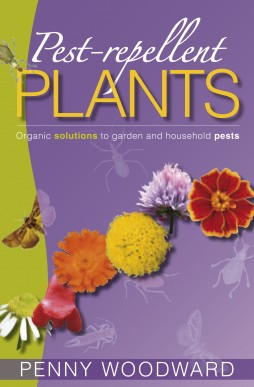 By Gail Thomas for Australian Horticulture.
By Gail Thomas for Australian Horticulture.
(reproduced with permission)
If the pests are taking hold, this useful reference has plenty of quick and easy organic solutions to getting the upper hand in both the garden and home.
With a host of ideas, strategies and answers this new revised edition has been updated and expanded, documenting more than sixty relevant plants along with traps, barriers, sprays and more to assist in addressing all manner of pest problems while maintaining a healthy balanced lifestyle and garden.
Penny Woodward who has a wealth of knowledge, having penned seven herb and garden related books has divided the plants and recipes in this volume into four categories; those that will kill pests, actively repel them, those that can mask the scents of plants targeted by pests and those that will kill or control fungi and bacteria.
Importantly it is imperative to take a holistic approach in maintaining a balance between pests and predators and the book also features tips and safety guidelines when making and using homemade pesticides.
The comprehensive A-Z of plants and organic remedies is fully illustrated with clear colour photographs throughout and also includes recipes using many easily accessible household ingredients including coffee, bicarbonate of soda, milk, molasses, flour and garlic. Read more

